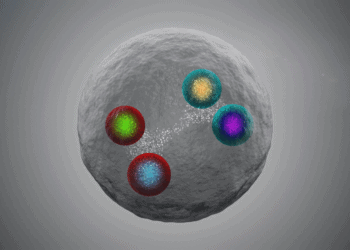
A group of scientists and technicians at CERN have made a doomsday movie filmed at their very own facility, called “Decay”, which tells the story of a pack of survivors left to fend for themselves in the onslaught following “Higgs boson radiation” exposure which caused their colleagues to turn zombie and hunger for brains. The low-budget movie was recently released on YouTube were it was greeted rather warmly. It’s well worth mentioning that the movie wasn’t endorsed or supported by CERN in any way, though they did not object to CERN-related references.
Decay is a solely independent work, directed by physics PhD students Luke Thompson and Hugo Day of the University of Manchester in England. The movie took two year to shoot at a cost of a mere $3000. What’s rather surprising and amazing at the same time is that the team actually managed to produce a movie that’s actually watchable, almost. Other B-movie companies invested hundreds of thousands to millions, yet Thompson and Day’s team manage to produce a work that has sound, props and even special effects that give it a realistic touch, as far as zombie doomsday goes anyway.
“The fact is that it’s a no-budget indie and there’s no reason to expect we’d sell more than a few hundred copies,” Thompson explained. “So we’d rather our two years of work was seen by more people by releasing it for free,” he told Wired.
DECAY Trailer
Nevertheless, by no means should “Decay” be taken too seriously. It’s a total spoof movie which makes fun of both the movie industry, which has exaggerated and portrayed science in an erroneous light for decades and decades, as well the media. If you remember when the LHC was first opened a few years ago, a slew of media reports stamped the particle accelerator as a doomsday machine, capable of generating black holes and other “mambo-jambo” sure to plunge humankind into oblivion. Science is no voodoo science, and many journalists have no excuse for their ignorance. Besides the wave of panic caused, and the obvious foul consequences that come with spreading untrue rumors and gossip, these statements emphasized mad science stereotypes further and misinformed. Decay comes as a sort of reply.
Despite the movie is filled with hilarious statements like Higgs boson radiation, it does have some scenes where science is actually accurately described. With this in mind, it’s actually quite an effective medium for popularizing LHC and CERN, if one is sure to put zombies, Higgs radiation and other nonsense aside.
The 76 minute film stars around 20 people some of them students and can be viewed in its entirety below.






